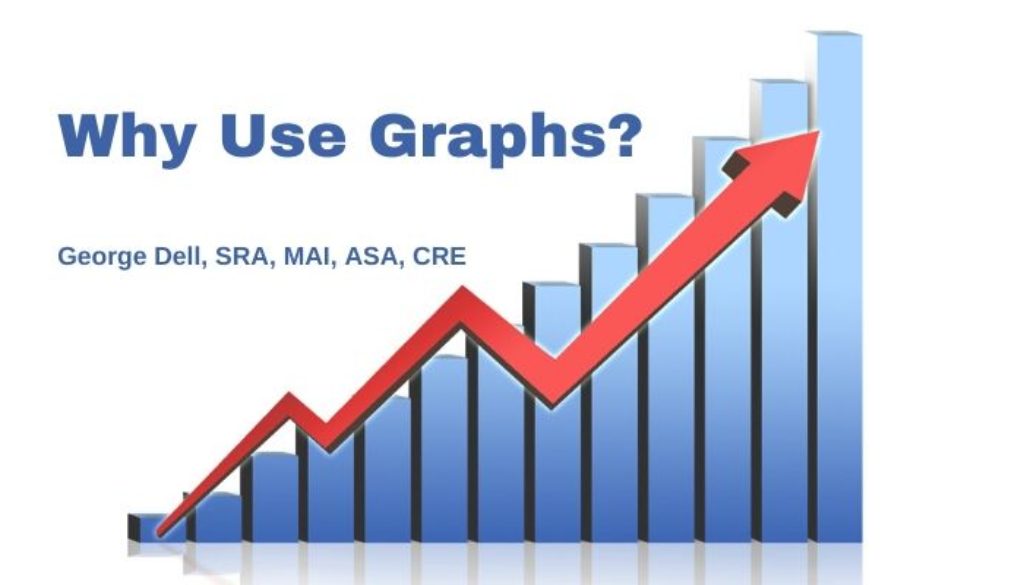Graphs for analysts and appraisers are how we see. It is difficult to vision a median or clusters or market relationships using just numbers. It is even blurrier when someone uses p-values, R-squared’s, and t-scores, claiming these somehow ‘support’ their personal opinion of value. Bad enough in regular work. Even worse gobbledygook when used as ‘evidence’ in litigation ‘expert’ witness practice.
For valuation and asset assessment, data visualization is important to communicate results. But there is more, much more. Visualization using graphs is the only real way to see markets.
It is easy to forget that what appraisers do is measure markets. The only real purpose of comparables is to estimate markets. Once selected, comparables also become an easy way to ‘support’ an opinion. It is circular thinking, but it works where data is sparse or difficult to collect.
Where data is plentiful (like more than six or seven competing sales), the human brain simply does not do well. Humans have a marvelous ability to generalize and make decisions quickly from anecdotal and limited input. Humans are terrible at making sense of more than two handfuls of data.
Graphs provide a way for the human brain to see larger groups of data. And if the group of data happens to be a carefully defined market segment — the brain can see the market, in a graph.
This may seem trivial, or even obvious. Yet appraisers have little training or education in the proper use of graphs. Often bloggers and writers discover how to create a colorful, appealing graph. However, few take the time to consider why a particular type of graph is good for a particular purpose. Few take the time to be clear on how the analyst (or client) can directly apply useful visual input.
Graphs are useful for:
- Description of property types, neighborhoods, and markets
- Insight with exploratory methods
- Comparisons of features
- Association of variables
- Outlier detection
- Modeling decisions
Bar plots, histograms, boxplots, and scatterplots each have a different purpose. Each relates to different levels (type) of data input. And each provides a powerful way for the trained brain to see.
The training involves subject-matter expertise, (like property types and valuation procedures). It also requires some understanding of the use of graphs. And relationship to the underlying descriptive numbers (like mean, median, deviation, range, and skew).
In short, graphic visualization is good for reports. Humans respond well to seeing shapes and colors — if they are clear in the purpose of the graph. Humans balk when presented with a graph which is not well labeled, and is not clear as to its purpose.
Modern asset analysts provide results beyond “an opinion.” Graphs are an important part of the analysis, as well as the client report.

July 22, 2020 @ 6:04 pm
George, I Have had cases that were decided on the Graphs. I do tax appeal and litigation work as well as DOD, Judicial Foreclosure and Damages cases.
In tax appeal cases I mount a graph on form board (18″X 24″) and put it in front of me, facing the hearing panel. I have done this in other cases, usually on {these days}, a screen.
On it I show the universe of relevant data based on location and property charachterics.
I like showing the comps the other side picked and those I picked, so the trier of fact can see the bias.
Meaning, if all my sales {colored in green bracket the trend line, and the other side are all on one side of the line, their bias is visible.
In one case it was the Slope of the line that was the hinge pin.
After testifying in deposition for several hours in Century City, CA, I was shown the other appraisers graph. And asked why the slope of the line was different than mine.
I cleared my throat and said as slowly {we are on the clock} as I could, that most appraisers do a Radius search. And, this neighborhood included homes with a view, homes on a plateau, and homes in the canyons or valleys.
While I had no idea what the appraiser had done I then explained how I created my graph.
I selected only homes that had been redone, that were on the plateau, and similar in size and property characteristics.
On the drive home, I called my friend George Dell. When I told him the story, he reacted. It seems the other appraiser knew I was on the other side of the case, and knew she better come up with a graphs. She had contacted George to help her create a graph from her radius search. Not telling what the criteria was, or that I was on the other side of the case {Ya, we all know each other, her being a USPAP instructor.}
Knowing what and why to search for data to create a graph is very important. The point being that a mere radius search might include differing neighborhoods or product types.